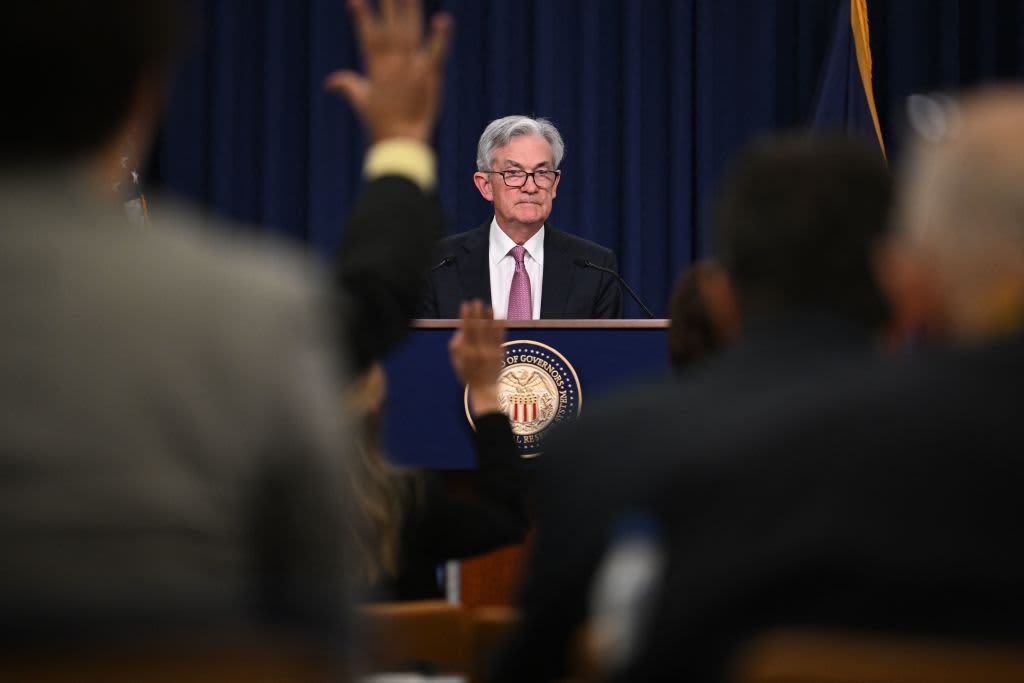When it comes to spending power, inflation means that things cost more and that your money becomes less valuable. When a period of high inflation hits — like right now — you may want to consider changing up the way you handle your finances to help protect the value of your cash.
“Inflation is a time for investors and savers to reevaluate their strategies,” says Walter Russell, CEO of financial adviser firm Russell and Company.
Through the Federal Reserve, the government tries to combat inflation on a large scale by raising the federal funds rate, which is the interest rate that commercial banks use to borrow and lend money to each other.
When the cost of borrowing becomes more expensive, higher interest rates trickle down to consumer products such as loans and mortgages, making them more expensive. But higher interest rates may also apply to deposit accounts, meaning that banks start to offer higher interest rates on checking, savings and certificates of deposit.
No one knows what the future will bring, but by making changes to how you spend and where you keep your money, you may be able to weather times of inflation more easily.
Here are some ways to save more during periods of inflation.
Look for high-yield interest rates
It can be frustrating to not be able to get loans for big purchases as easily during periods of high inflation. Still, consumers can take advantage of higher interest rates on bank accounts to fight the effects of inflation on their cash. Bank account interest rates usually don’t totally beat the rate of inflation, but these accounts can help hedge against inflation far better than keeping cash at home or in a low-rate account.
The national average annual percentage yield for savings accounts is 0.06%, according to the Federal Deposit Insurance Corporation, but there are plenty of financial institutions that offer rates that are much higher — some even 1.00% APY or more. To find these rates, you can research high-yield or high-interest accounts and choose the bank that works best for you.
Find ways to keep costs low
If you haven’t looked over your budget in a while, now may be a good time. During the pandemic, you may have subscribed to multiple streaming services that you don’t use anymore, or you might be spending more money dining out or paying for more convenience services now.
Some people are taking even more radical steps to save money. Amanda Claypool , a financial blogger based in upstate New York, has recently made larger lifestyle changes to keep her costs low in the face of inflation. She spent 2021 living out of her car while driving around the country and plans to return to that way of living soon to save on housing costs. She’s also been trying to trim her budget by biking 16 miles round-trip to work and by eating more rice and beans, a cheap but healthy meal.
Related Business Coverage:
“I’m concerned about rising food costs and the impact that will have on the entire supply chain,” Claypool said through direct message. “I’m using the time now to prepare for future food insecurity by learning what food my body actually needs compared to what I enjoy eating. This might seem drastic, but it’s helping me save money and eat better in the short term.”
Not everyone can or wants to move into their car, but Claypool’s money-saving tactics can work on a smaller scale. You can bike more often instead of driving everywhere, and you can reevaluate your food budget to add more cheap healthy meals. For a bigger change, you could downsize your housing to save even more money.
Consider investing or buying bonds
It’s a good idea to keep short-term cash — like an emergency fund — accessible in a savings account, but if you have savings that you don’t expect to need for a year or more, you may want to consider investing those funds or buying a treasury bond.
“For someone who has a lot of cash sitting on the sideline, (investing) could help you not lose money,” Russell says. ”More people might be willing to take on more risk because they want a higher rate of return.”
Russell also recommends that consumers look into getting TreasuryDirect Series I savings bonds, which can give an interest rate of over 7% on up to $10,000 for a one-year term. These bonds are basically like a certificate of deposit: You put your money in one for a year, and by the end of the year you have a guaranteed rate of return that hopefully stays higher than the current rate of inflation — so your money won’t lose value.
The government will continue to review inflation data and make appropriate changes to the federal funds rate. However, there are other factors that may slow inflation in the coming year, such as changes to global supply chains that might free up inventory and lead to lower prices for goods. No matter whether inflation goes up or down, though, it’s a good idea to keep an eye on ways to optimize your savings.
___________________________________
This column was provided to The Associated Press by the personal finance website NerdWallet. The content is for educational and informational purposes and does not constitute investment advice. Chanelle Bessette is a writer at NerdWallet. Email: cbessette@nerdwallet.com. Twitter: @crbessette.
RELATED LINK:
NerdWallet: What bank is best for you? https://bit.ly/nerdwallet-what-bank-is-best-for-you



